We all know that small group reading instruction time is really important. It’s important that we have that time to work with those small groups of students to help them grow as readers. However, what do the rest of the students do during this small group time? You need those students to be engaged, productive, on task, and not interrupting your small group time. This post will offer tips and suggestions that you can have your students do while you are pulling small groups AND share a free toolkit of resources to help with management and organization.
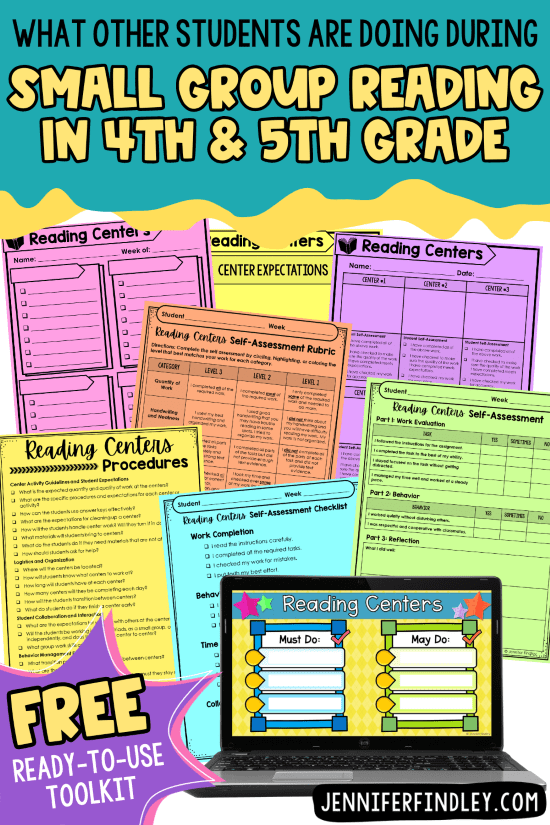
Tips for Choosing Small Group Activities
Before we dive into the suggestions, here are a few things to keep in mind.
Tip 1: You may need to try a few of these different routines with your particular class of students before you land on one that really works. Some you may think will work, but with the timeframe that you have or your specific group of students, they just don’t. Don’t be afraid to try out different routines and activities to see which ones are going to work best for you and your students.
Tip 2: Whatever you decide to do, try to have it be a weekly routine so that your students know exactly what to expect. This is going to help with behavior management and transition time.
Tip 3: Keep a routine, but don’t be afraid to mix things up. This can be incorporating specific holiday or seasonal activities. Or it can be just mixing things up with different kinds of activities that work well with the skills that your students are practicing. This will help keep your students engaged and on-task.
Tip 4: Depending on your timeframe, you may need to choose 2-3 different activities for your students to do. For example, if you are pulling two 20 minutes small groups, the first 20 minutes they can do one activity and then the second 20 minutes they could do another activity. This will help keep students engaged and keep them from getting bored or off task with the same activity for too long.
Activities for Students During Small Group Reading
Now, let’s take a look at the different types of activities that other students can do while you hold small group instruction.
Note that some of these activity types can serve multiple purposes. For instance, a whole group extension activity could also be a digital activity or use collaboration. A hands-on activity might also incorporate review or collaborative work.
Independent Reading
The first activity to consider having students do is to independently read. If your students are independently able to read grade level text and respond to that text, definitely have them do that.
However, if your students are not able to read on grade level or they don’t have the stamina for independent reading, you don’t want to have that be the only thing that they’re doing. That may not be the best use of that time if the students are not on task or not actively engaging with texts in a way that will grow them as readers.
With this in mind, try to incorporate some type of independent reading into that time if you are able. You could always have the first 15 minutes or the very first small group rotation could be independent reading.
Whole Group Reading Extension Activity
One activity that is my personal favorite is a teacher-assigned task that goes along with the specific whole group reading lesson.
For example, if you are teaching a skill such as identifying the setting, you could have your students complete an activity where they read a passage and then determine the setting of the story. This would be a direct application and practice of what you have taught during whole group instruction.
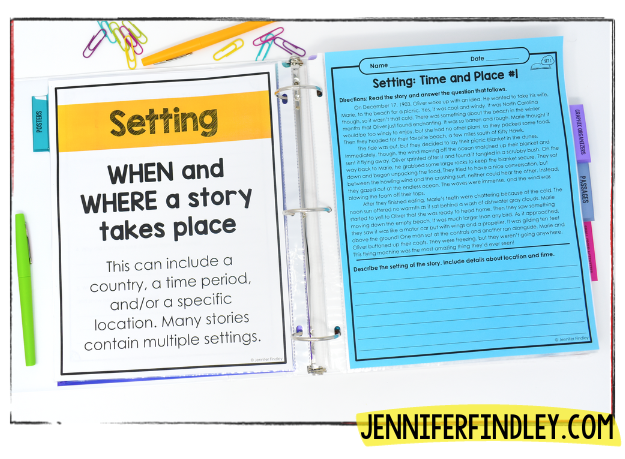
You can also scaffold this type of activity if needed. Here are a few ways to do this:
- Provide students with differentiated passages that are on their level.
- Provide sentence stems to help with written responses.
- If you decide to only have one grade-level assignment and not differentiated assignments, this can be the work you do during small group with students who may struggle. Then you can give them a separate task when they are ready to work independently. The separate task can be one that is on their reading level, like the example shown below from my reading intervention activities. These activiites provide grade-level skill practice but with 1st/2nd grade level passages.
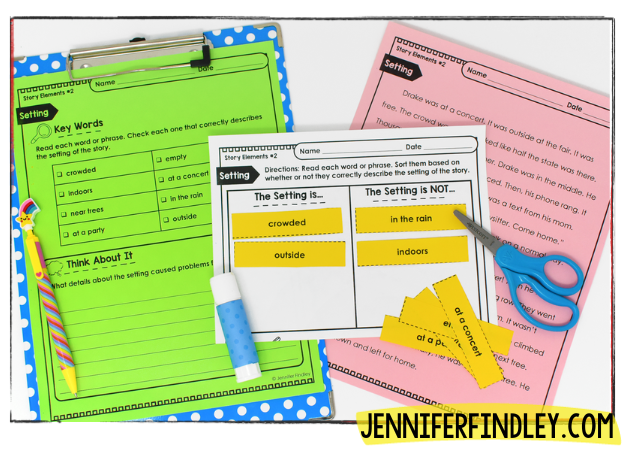
Review Activity
This type of activity is very similar to the whole group extension activity, but it uses a review skill that was previously taught. This can be a skill just taught (like the week before) or taught weeks/months prior.
These types of activities are important to consider for retention and spiraling of skills. Adding review activities throughout the year makes test prep and review season much easier.
Digital Activity
The next type of activity is having students work on a digital activity or task. This activity can be easily differentiated because students are not able to see what other students are being assigned.
Digital activities are also a way to pull in extra engagement with visually appealing slides and interactive movable pieces. You can also have some additional support added in. For example, you can have some students working on digital activities that provide audio support for them when they’re reading a passage.
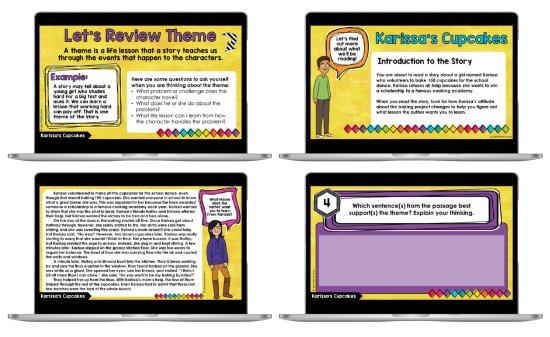
Collaborative Activity
Collaborative activities are a great way to encourage teamwork, communication, and collaboration while you are teaching small groups.
Here are some activities to consider for your students during small group reading time that incorporate collaboration:
Partner Reading Activities – This can be a separate activity or could be as simple as pairing students up to complete the whole group extension or review activity.
Reading Task Cards – Students can work together to complete task cards that go along with the skill they are learning or that review previously learned skills.
Literature Circles or Book Clubs – These are a great way to get students engaged with reading and discussing books with other students.
Reading Games – You can increase engagement by using activities that present the questions on gameboards and have students working with partners to read a text and “play” the game.

Hands-On Activity
Hands-on activities are often just used in the primary grades, but they can definitely be used in upper elementary.
Here are some of my favorite hands-on activities that can be assigned to students while you pull small groups:
Reading Puzzles – Students can match puzzle pieces with short stories on them with the puzzle piece that shows the theme, the point of view used, the main idea, the text structure, etc.
Reading Spinner Centers – Give the students a paperclip and let them use their pencils to spin questions to answer after reading a passage.
Roll and Answer – Mix up regular question and answer practice by giving students dice to roll to determine which question they will respond to.
Reading Sorts – Let students practice key reading skills by sorting short texts or stories into the correct category (theme, point of view, text structure, etc.)
Ideas for Structuring Reading Activities
Now, let’s talk about how you might structure the assignments and present them to students.
One Activity and then Switch
This is as easy as it sounds. Post and clearly explain the activities that you want students to complete. Have students work on the first activity for a dedicated amount of time (the time that matches your first small group meeting) and then switch to another activity (this is when you pull your second group).
You can repeat this as often as you need depending how many small groups you pull.
This works well if you are incorporating activities that don’t have a set finish or end time, such as independent reading, or activities that are thorough enough to fill the entire time given (but can also be stopped at any time), such as completing a set of reading puzzles or playing a reading game.
Checklist of Tasks
If you don’t want to do one activity and then switch to the next activity, you could have the students have a checklist where they work at their own pace through different activities. You can use a set list of assigned tasks or do a may do/must do type of checklist.
This is something that is easily differentiated, and you can change up depending on your students.
The checklist can be a whole group checklist OR differentiated by students.
You can use a digital assignment slide or printable checklists. Grab both of these in the free teacher toolkit shared at the end of this post.
Reading Centers or Stations
Finally, you can do reading centers where students physically move through rotations of centers to complete assigned activities.
Here is how this might look for a 2-day rotation:
If you have two time slots for two small group instructions, then your students would complete two centers the first day. The second day they would complete two more centers, for a total of four centers.
If you wanted to do more days of small group instruction, you could restart the centers every two days OR have more centers for students to move through.
Want ideas for consistent reading centers for 4th and 5th grade? Click here!
Classroom Management Tips
Here are a few behavior and classroom management tips to keep in mind or consider.
Tip 1 – Strategically schedule your groups and who you see first.
Pull your students who you know are going to have a little difficulty being on task or having behavior issues first. Keep them on task in your small group. Then, when they begin to work independently after leaving your group, provide some form of extra accountability or help them get started on the assignment. That way you can make sure that they are going to be productive during that time.
On days when you decide not to start with that particular group, begin with students who can independently start their small group work. This approach allows you the flexibility to check on and assist other groups to ensure they are on task before you begin your small group instruction.
Tip 2 – Clearly teach, model, reinforce, and then post your expectations.
Whatever you decide to have your students do during small group instruction is only as good as the procedures you teach your students. This is true for any type of structure you use, but definitely true of reading centers.
Before introducing reading centers or stations, think through all of the procedures your students need to know or follow for successful on-task centers. Grab a free checklist (with an editable version) in the free toolkit shared on this post.
Tip 3 – Use Consistent Activities.
Using consistent activities is ideal for several reasons. First, your students know exactly what to expect and they can focus on the work and not learning a new set of activities or directions. Second, they make planning and preparing so easy. You already know what activities to use. All you need to do is choose the ones that match the skills you want your students to practice.
Tip 4 – Choose the Skills for Practice Strategically
Don’t include new skills or “soft” skills that students are not ready to practice independently. Keep all assignments either review skills or extensions of current learning if they are ready to apply it and practice independently.
Tip 5 – Have Students Self-Assess
Provide rubrics or reflection sheets that help students evaluate their own work and behavior during independent work time or centers. This can help with self-regulation and accountability. Grab free rubrics in the teacher toolkit shared on this post.
Grab the Free Teacher Toolkit AND FREE Reading Centers
To get access to the teacher toolkit of resources for managing and organizing the rest of the students during small group instruction and lots of free reading centers to try out, just click on the GIF below and enter your email on the page to get instant access!


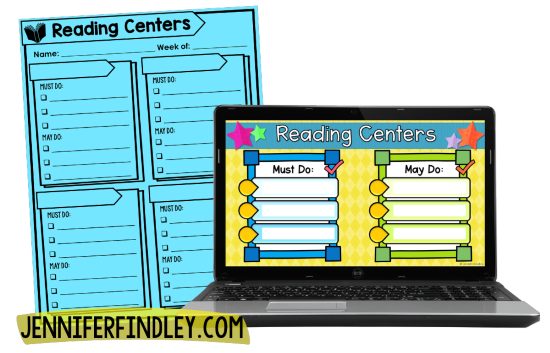
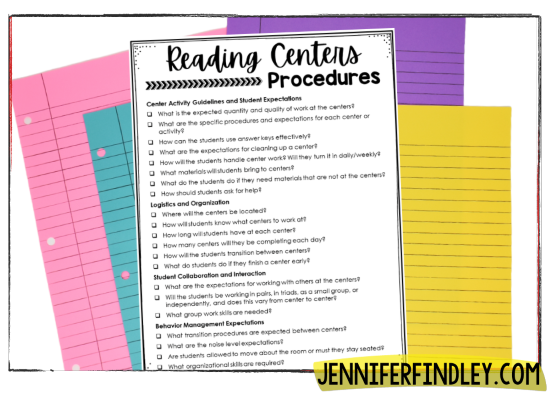









Thank you for including all of these resources. I am always looking for different strategies to use during small group and love that you have digital and hands-on activities available. The free teacher toolkit was also very appreciated, especially with the editable templates.
I am so glad it was helpful!